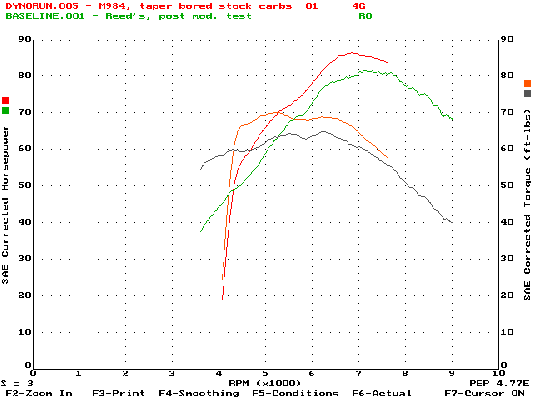
We (Michael and myself) decided to build this one to keep it servicable and rideable. We decided to leave the stock airbox and inlet length in spite of the knowledge that it would compromise the maximum RPM and thereby, the max HP.
The heads are ported with new exhaust seats, and I used 44mm inlet valves, with the stock cams.
Taper-bored stock carbs are used, but I didn't trim the throttle shafts. The second set of tests will probably (now it does) have that little detail done.
The exhaust is a Stain-Tune full system.
This one has the Titanium Pankl rods and a lightened crank, but we left a stock flywheel on to 'tame' it down a little. A good choice, as it revs very quickly.
After a 1,000 mile break-in, I put it on the dyno to see what he's been riding for a couple months.
The first run showed why the 'smile-factor' was there.
I've compared this with the first run from Reed's 904cc Monster in '95.
We extracted several more HP from Reed's bike with a lot of testing, and I thought there would be a little more in this 984.

The second dyno chart is the complete standard battery of tests, a fourth gear roll-on, an all gear (2nd thru 6th), and a throttle response test.
On the all-gear run the tire spun in second gear, thus the low HP in 2nd.
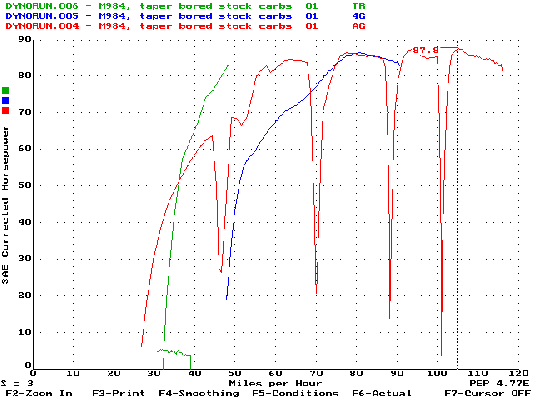
And a picture of the aforementioned M984.
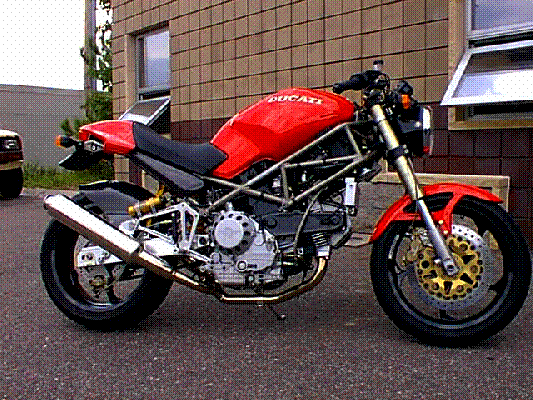
After an initial 86 HP run I didn't have much hope for big improvements. It was apparent that my experience had proved valuable in making some pretty good guesses about tune-up details like jetting and ignition timing.
I pulled the carbs off when I adjusted the valve clearance, and disassembled them to trim the throttle shafts.
When they went back together, I cut off the screws for the vacuum holes (which protruded into the manifolds), and trimmed the carb/manifold neoprene adapters, and cut about 1/4" off of the manifolds, at the carb end.
I was pleasantly surprised to find an improvement in the power. (DYNORUN.009, below)
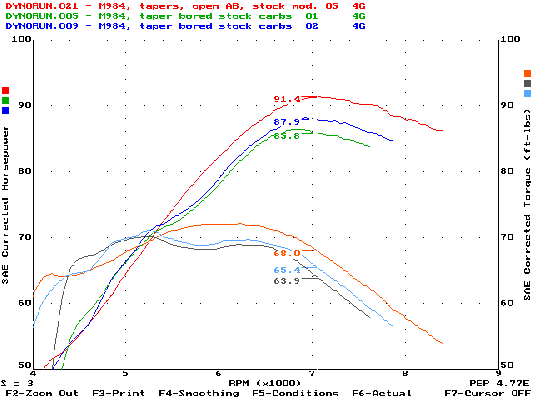
I had also thought, that this larger displacement engine might respond to removing the air-box top. Previous tests with 904cc engines had shown little CO (a fuel/air ratio indicator) change associated with removal of the air-box top. This implies, little change in restriction to air-flow.
Much to my surprise (and enjoyment) the results where 'stunning'! (DYNORUN.021)
Apparently, the airbox is a resonant chamber which, when the top is removed, becomes an infinite volume and allows the torque curve to assume that smooth (and substantial) shape.
My conclusion is; removing the air-box top isn't an air-flow improvement, as much as a resonant frequency enhancement.
Now I want to put short manifolds on this thing and completely ruin the drivability to get a couple more HP, NOT!!!
This bike drives like a stock M900 (on steroids). Period!!
Now Reed wants to put a pair of stock carbs on his 944.
The last dyno chart shows Michael's M984 with the baseline runs, stock, and Gary Johnson's 944cc Superlight, with 39 Kiehins and 'Termignoni Spaghetti' exhaust system.
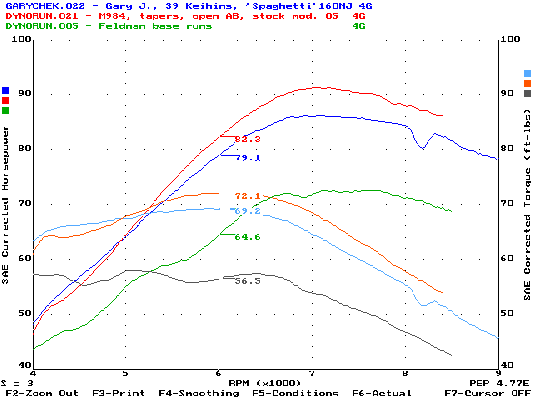
Like I've said before, 'If you can't tune the stock parts, how can you make it work with the race stuff?'